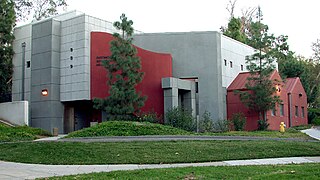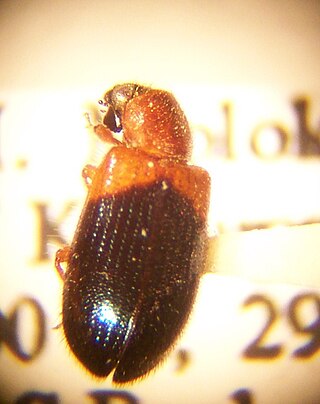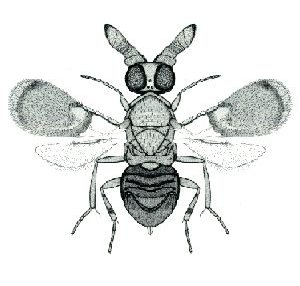Related Research Articles

In biology, the imago is the last stage an insect attains during its metamorphosis, its process of growth and development; it is also called the imaginal stage, the stage in which the insect attains maturity. It follows the final ecdysis of the immature instars.

The pollen basket or corbicula is part of the tibia on the hind legs of the female of certain species of bees. They use the structure in harvesting pollen and carrying it to the nest or hive where it is used as food by the colony.

The Eulophidae is a large family of hymenopteran insects, with over 4,300 described species in some 300 genera. The family includes the genus Elasmus, which used to be treated as a separate family, "Elasmidae", and is now treated as a subfamily of Eulophidae. These minute insects are challenging to study, as they deteriorate rapidly after death unless extreme care is taken, making identification of most museum specimens difficult. The larvae of very few species feed on plants, but the majority are primary parasitoids on a huge range of arthropods at all stages of development. They are exceptional in that they are one of two hymenopteran families with some species that are known to parasitize thrips. Eulophids are found throughout the world in virtually all habitats.

The Entomology Research Museum is the insect collection of the Department of Entomology of the University of California, Riverside. It contains approximately 4 million total insect specimens, over 3 million of which are pinned, roughly 400,000 mounted on slides, the remainder preserved in ethanol. Of the ~4 million curated holdings, approximately 75% of are identified to genus level or better. An estimated 25% of the entire collection are Hymenoptera, 21% are Coleoptera, 18% Diptera, and 18% Lepidoptera.

Alexandre Arsène Girault was an American entomologist specializing in the study of chalcid wasps. An eccentric and controversial figure, Girault was also a prolific and dedicated entomologist. He published more than 325 papers and described over 3000 new taxa from Australia.
Rudolph Dittrich was a German entomologist specialising in Coleoptera and Hymenoptera. His Hymenoptera collection is in the Museum of Natural History Wroclaw University.

Allothereua maculata is a species of centipedes found in Australia known as the house centipede – a name applied elsewhere to other species.
John Braithwaite Wallis (1876–1962) was a Canadian entomologist, a graduate of the University of Manitoba. The J.B. Wallis Museum of Entomology at the university was named in his honour. He was also a coleopterologist, having described many beetle species including Haliplus leechi.

Anagyrus is a large genus of parasitic wasps from the family Encyrtidae. Anagyrus is distributed throughout the world. A subgenus of Anagyrus is known as Nesoanagyrus
Frederick Ernst Melsheimer, M.D. was an American entomologist noted for his work on Coleoptera. He was President of the American Entomological Society in 1853. Frederick Ernest Melsheimer's most important work was Catalogue of the described Coleoptera of the United States (1853). His co-authors on that work were John LeConte and S.S. Haldeman. His father, Frederick Valentine Melsheimer (1749–1814) was also an entomologist, as was his elder brother, John Frederick Melsheimer (1780–1829).

Necrobia ruficollis, the ham beetle, red-shouldered ham beetle, or red-necked bacon beetle, is a mostly carnivorous beetle in the family Cleridae with a cosmopolitan distribution.
Ernst Evald Bergroth was a Finnish physician and amateur entomologist.
Edward Lawrence Todd (1922–1986) was an American research entomologist, specializing in the taxonomy and systematics of Lepidoptera (Noctuidae), and Hemiptera (Gelastocoridae).
Hans Franz Paul Hedicke was a German entomologist.

Encyrtinae is a subfamily of parasitic wasps in the family Encyrtidae.
John Stuart Noyes is a Welsh entomologist.
Austroencyrtus is a genus of parasitic wasps.

Psyllaephagus is a genus of chalcid wasps. It was named and circumscribed by William Harris Ashmead in 1900. As of 2019, Psyllaephagus contains approximately 245 species. They are found worldwide: Australia has 100 described species; the Palaearctic region has about 57 species, India has about 20, and Africa about 30.
Parachalcerinys is a genus of wasp. As of 2018, three species are recognized, which are all found in Australia.
Marina Dmitrievna Zerova was a Ukrainian entomologist. Several insects have been named after her. She became Doctor of Biological Sciences (1980), Professor (1989) and Honored Worker of Science and Technology of Ukraine (2003). In 1981 she was awarded the Award of the National Academy of Sciences of Ukraine named after DK Zabolotny.
References
- ↑ "Biography". Smithsonian Institution Archives . Retrieved April 20, 2012.
- ↑ Library of Congress Online Catalog, Titles list with author: gordh